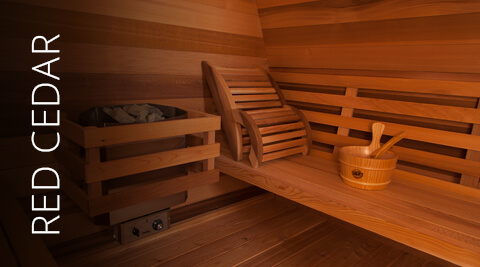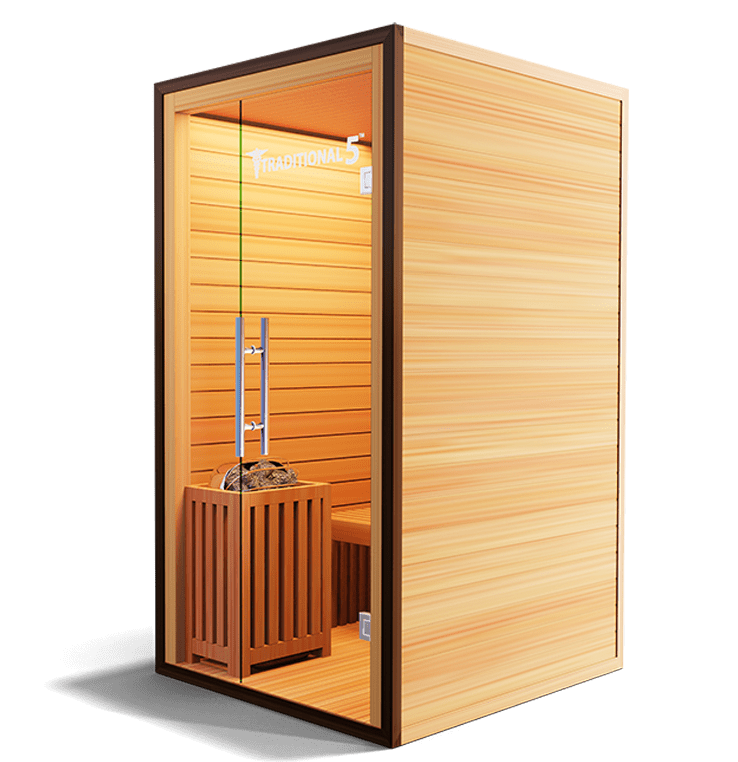The Facts About Traditional Sauna Uncovered
Some Known Factual Statements About Traditional Sauna
Table of ContentsMore About Traditional SaunaTraditional Sauna Things To Know Before You Get ThisHow Traditional Sauna can Save You Time, Stress, and Money.6 Simple Techniques For Traditional SaunaThe smart Trick of Traditional Sauna That Nobody is Discussing
A lot of the weight lost in a sauna is water loss and is re-gained upon rehydrating. Nonetheless, certainly sauna can be an integral part of a healthy fat burning program. To take a look at the distinctions between conventional and IR saunas, I will certainly divide these into verifiable, academic, and made distinctions.Hence, the best factor in the saunawhich is at the ceiling straight over the sauna heateris commonly between 185 and 190 F. Claims that a typical sauna surpasses 200 F is simply not true and not appropriate for electrical saunas marketed in the US. The temperature for a far-infrared sauna is usually established in between 120 and 140 F; nonetheless, unlike the conventional sauna, the objective in and IR room is not to accomplish a high temperature level.
Due to this, the temperature difference is practically unnecessary, given that extreme sweating leads to both sauna types, but the method of heating the body is various. In an IR sauna the bather will really feel warm and will sweat profusely, yet at much reduced temperature levels (Traditional Sauna). Hence, if the goal is to invest longer amount of times in the sauna, the IR sauna is an excellent selection
When a conventional sauna has been correctly heated up, the sauna walls are cozy, the air temperature level has accomplished set temperature level and the rocks are super warmed. As an intriguing side note, the heated walls and the rocks are discharging far-infrared heat, incorporated with the heated air, to produce an "wrapping up heat".
How Traditional Sauna can Save You Time, Stress, and Money.

When the high temperature level is attained, the components cycle on and off to maintain the heat. Many traditional sauna users delight in pouring water over the rocks to produce heavy steam to increase sauna humidity levels. The advantages of putting water over the rocks include: making the area a lot more comfortable, dampening the nasal flows, and enabling the use of aromatherapy by mixing necessary oils with the water.

When the energy enters the body, it triggers the body temperature level to boost and eventually leads to sweating. In an read infrared sauna it is very important for the emitters/heaters to stay on nearly frequently. Given that there is no mass of rocks to keep heat, the sauna will certainly cool if the emitters shut off.
As discussed over, the sauna bather in an infrared area wishes to place himself in front of operating emitters to get optimal gain from the warmth. The home heating time for the 2 spaces can be really various, relying on how the areas are used. For a typical sauna, a bather must permit 30-40 minutes for the space to achieve a preferred temperature and to correctly pre-heat the rocks.
Some Known Factual Statements About Traditional Sauna
A well constructed sauna will normally accomplish a temperature of 150-160 F in regarding 30-40 minutes. For hotter temperature levels, the space might require to warm for a longer duration. Once the room achieves set temperature, the heating unit will certainly cycle on and off, commonly running regarding 50% of more tips here the time. The protected wall surfaces and the warmed rocks will maintain the room warm and at steady temperature levels.

Standard saunas tend to be bigger (for this reason use more electrical energy) than infrared saunas, although traditional saunas are definitely available in one and 2 individual dimensions too. For a two-person standard sauna, 5x6 or 5x7 size is most popular. The top bench can comfortably seat two or 3 people and is additionally enough time to relax throughout the sauna session.
Not known Facts About Traditional Sauna
The typical expense per kWH of electricity in the U.S. is approximately $0.11, so a 4.5 kW heating system will cost around $.50 to compete one hour, if the heating system runs continually for one hour. Normally a sauna heating system will certainly compete 75% of the first hour and 50% of subsequent hours on considering that the elements cycle once the set temperature level is attained.

There is a rarely talked about difference in the social experience between the 2 areas. While our culture has shed some of the social advantage of the standard sauna moved here experience, it can be very socially gratifying (Traditional Sauna). From family time in the sauna, to heart-felt conversations with loved ones, to sauna partiesthe conventional sauna experience can cause intimate interacting socially
The Definitive Guide for Traditional Sauna
Many greater end infrared spaces consist of colored light treatment, stereo and full-glass fronts. The size of most areas permit 2 people to conveniently use the room, while some styles might enable a 3rd or fourth individual to use the area. Custom-made infrared areas are also readily available, with room sizes readily available up to 7' x 8' x 7' high.